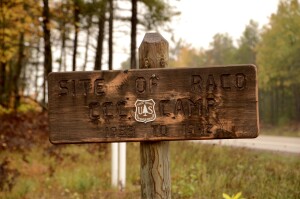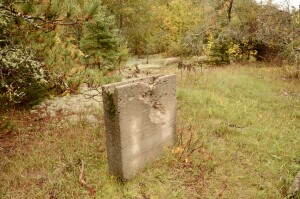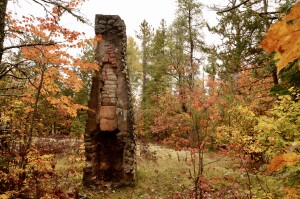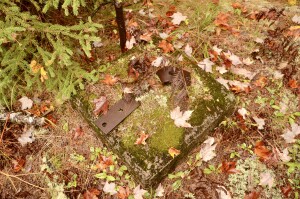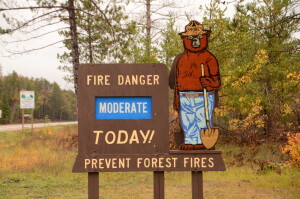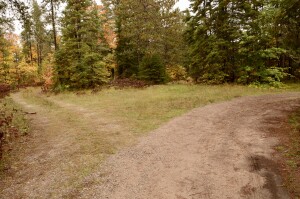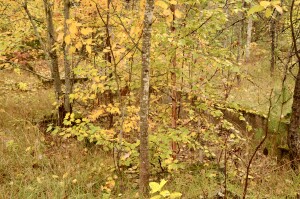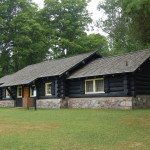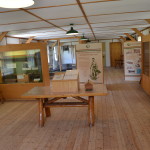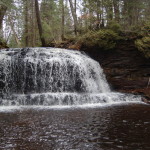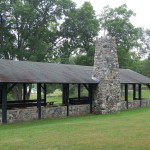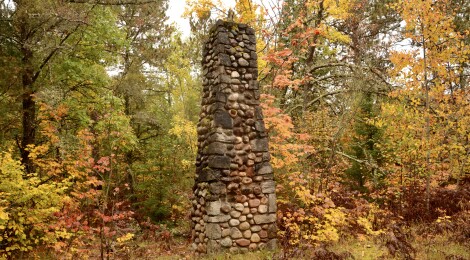
Camp Raco: A Former CCC and World War II POW Camp in the Upper Peninsula
The Civilian Conservation Corps was one of President Franklin D. Roosevelt’s plans to help the country come out of the Great Depression by putting people to work. The focus was on putting men to work in the forests planting trees, and by the mid-1930s more than 100,000 men were at work in more than 50 camps in Michigan. Many of these camps were in the Upper Peninsula, mostly concentrated in what are now the Ottawa and Hiawatha National Forests. Excellent examples of CC work are still visible at Seney Wildlife Refuge, Indian Lake State Park and Palms Book State Park/Big Spring Kitch-iti-kipi, Bewabic State Park, and Wells State Park. Every once in awhile we come across another CCC site in our travels and the most recent one was the minimal remains of what was once Camp Raco.
According to the Hiawatha National Forest: “Camp Raco was the first CCC camp in the Upper Peninsula. It was home to Company 667, which was organized in April, 1933 with 200 enrollees from Detroit and Hamtramck. Official designation as Camp Raco F-5 occurred in summer, 1933. Work by enrollees at Camp Raco included tree planting, truck trail construction, telephone construction, stream improvement, campground construction, fish planting and fire presuppression. By 1942, when Raco was the only camp left on the district, its fire protection area covered 151,140 acres. After the camp closed, the facilities were used during World War II as a German prisoner of war camp.”
It may be a bit of a surprise to some but the Upper Peninsula was actually home to five POW camps. Existing infrastructure from the days of the CCC and the remote locations (which may have hindered any thoughts of escape) were a few of the reasons these camps were located there. You can watch a preview of the 2004 documentary “Enemy in our Midst” here, and check out 2019 coverage by WJMN here.
Little remains of Camp Raco today, but it was still fun to explore the site a little bit and see what we could find. The highlight is the old chimney, but other foundations can be found with minimal deviation from the main road. For a detailed look at that site, check out this great post by Michigan explorer “nailhed” here.
The ruins of Camp Raco are located on USFS-3154 south of M-28. Look for the Smokey Bear sign. Follow USFS-3154 south for about a quarter mile to where it forks. You will find some ruins to the right, the chimney can be found a short distance down the left fork (shown above).
Here are some resources for further reading on the CCC:
Hiawatha National Forest Driving Tour
Michigan CCC Museum at North Higgins Lake State Park
Photo Gallery: Bewabic State Park

